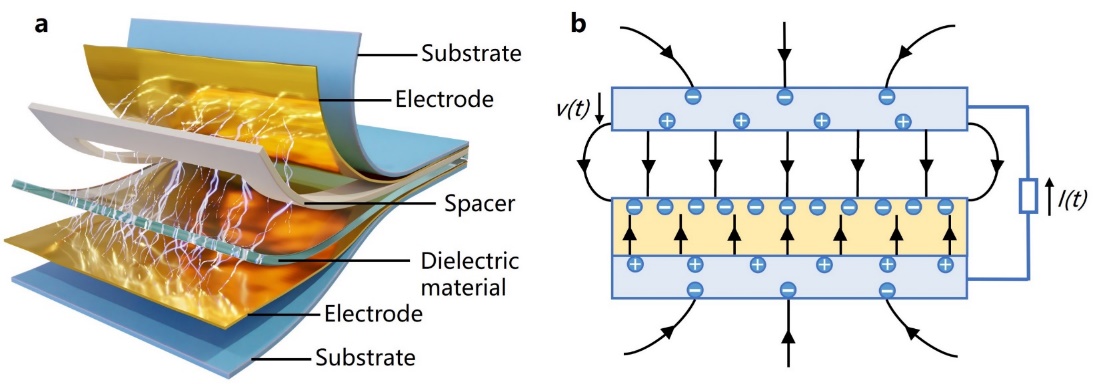Abstract
Triboelectric nanogenerators (TENGs) have demonstrated remarkable capabilities in energy harvesting and self-powered sensing, while TENG theories have set the foundation for their further development. This study presents a systematic theoretical analysis for contact-separation mode TENGs, including theoretical models, analysis methods and validation approaches. Specifically, three infinite plate models are proposed to cover typical forms of contact-separation mode TENGs. According to the physics of charge conservation and electrostatic equilibrium, the distribution of initial charges on tribo-charge layers, and redistribution of all charges on the TENG are determined, based on which the electric field, charge transfer process, conduction current in the external circuit and displacement current inside TENGs are mathematically deduced. TENGs’ characteristics and figure of merit can be directly obtained from the proposed theory, which are consistent with phenomena in practice. This validates the theoretical derivations, and better explains TENG performances in practice. Furthermore, applicability is discussed by comparing the finite plate models and infinite plate models, and more accurate schematic diagrams depicting the working principle of TENGs are created. Additionally, an electrodynamic model with a solving approach is proposed that can be applied for TENGs of any size. Extended analysis for different applications is performed, demonstrating the practicability of the proposed theory for TENGs. This work may provide a solid and practical theoretical foundation for TENG development.

